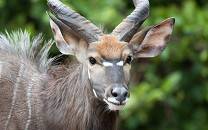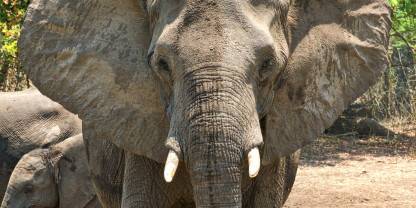One of Malawi’s top safari destinations, Majete Wildlife Reserve supports all the Big Five, as well as cheetah and African wild dog. After suffering years of intensive poaching, the park has experienced an extraordinary revival under the NGO African Parks, which took over management in 2003. Since then, some 3,000 individuals representing 17 large mammal species have been reintroduced, and naturally occurring animal populations have recovered.

-
Best Time To Go
- July to October (Dry bush; animals are easy to find)
-
High Season
- July to October (Park is relatively busy; higher rates)
-
Size
- 700km² / 270mi²
-
Altitude
-
145-752m /476-2,467ft
 View Photos
View Photos
 View Photos
+24
Photos
View Photos
+24
Photos
Pros & Cons
- Good wildlife viewing, with all the Big Five present
- Beautiful scenery along the Shire River
- Accommodations include a community-owned camp and a stunning five-star lodge
- Night drives are available
- Strong wilderness feel, especially in the little-visited south
- More than 400km/249mi of roads and 4x4 tracks
- 4x4 vehicle needed outside the main 55km/34km road circuit
- Some animals are still quite shy and difficult to find
- have been suspended due to the high lion population
Wildlife
Since 2003, lion, leopard, cheetah, African wild dog, black rhino, elephant, buffalo and zebra have all been successfully reintroduced to Majete. Giraffe, though not indigenous, have also been translocated into the reserve. Of the Big Five, elephant and lion are both plentiful, while the population of 2,000 buffalo tends to move around in huge herds. Hippos and crocodiles are resident in the Shire River. A varied cast of antelope includes Lichtenstein’s hartebeest, sable, impala, waterbuck, greater kudu, nyala and bushbuck.
More about Majete’s wildlifeScenery
The main vegetation type in Majete is interspersed with rocky outcrops. One of these outcrops, known as the ‘view spot’, overlooks endless wooded hills and is a great place to get a sense of space and the wilderness. The reserve also incorporates patches of acacia woodland, while the Shire River supports a ribbon of lush riparian forest. There are areas of open grassland in the south. The landmark Kapichira Falls is now largely submerged by a hydroelectric dam.
Activities
The main northeastern road circuit can be tackled in any vehicle and comes with a good chance of spotting elephant, lion, hippo, giraffe and zebra. A high-clearance 4x4 vehicle is required to explore the wilder-feeling south, which is the best place to look for buffalo. Boat trips on the Shire River were stopped for safety reasons after a flood destroyed Kapichira Dam in January 2022, but they should resume once repairs are complete. The high lion population also means are no longer offered. For self-sufficient visitors, an overnight stay at Nakamba Hide, overlooking a grove of baobabs and a , offers the best chance of seeing a black rhino.
Weather & Climate
The climate in Majete is hot and tropical. Temperatures are relatively uniform throughout the year, though there is a distinct rise in humidity and temperature in October, just before the start of the Wet season (November to April). December to March are the wettest months, and daily thunderstorms can be expected. During the Dry season (May to October), the coolest months are June and July. Bring warm clothing for early-morning if you are visiting then.
More about the weather and climateBest Time To Visit
The best months for wildlife viewing are July to October, during the middle and end of the Dry season, when animals are drawn to the river and . However, it can be very hot in October, which might be difficult to bear. The scenery is lush and green in the Wet season, from November to April, but animals tend to be harder to find and the roads become difficult to navigate.
More about the best time to visit



